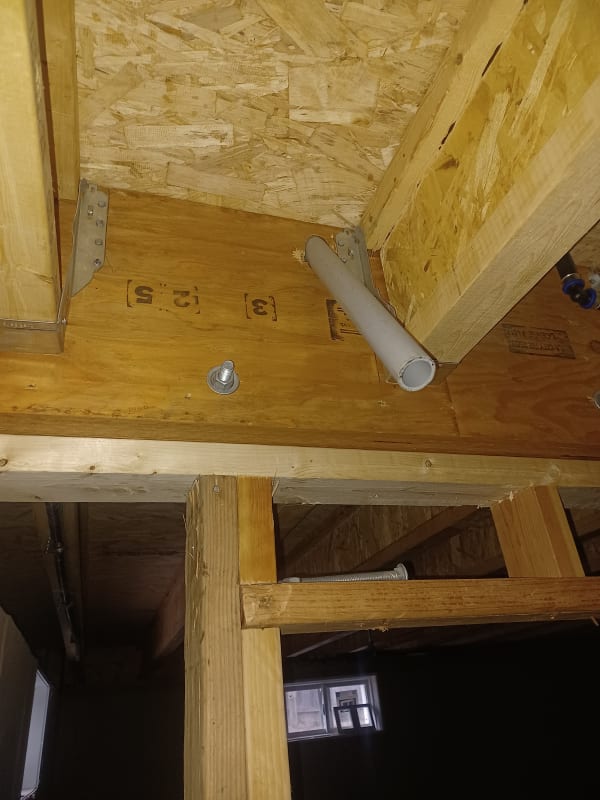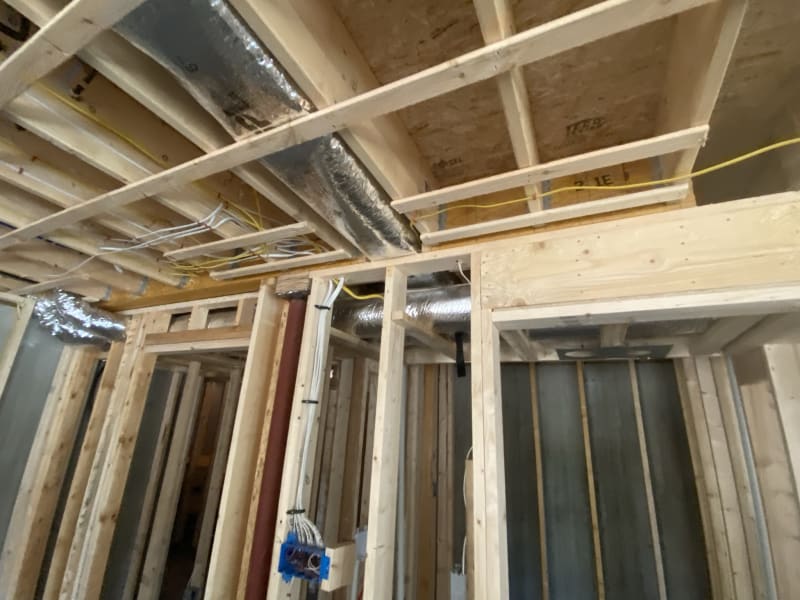So, I designed this multi family house over a year ago. Construction has been slow. I was last at the house 5 months ago with framing complete. Now, 5 months later I received the attached photos:


So the electrician in his infinite wisdom decided it was best to drill through one of my fancy LVL's vs bringing his conduit down at the perimeter wall of the house. Now I have been tasked with accepting the situation, or fixing the situation.
The GC has given me the position of the pipes in relation to the end of the beam. Other than checking moment and shear at this location for the reduced section, what else can I do?
Reinforcing of the beam is going to be incredibly difficult as we used CCQ style caps on the columns (meaning "adding another ply) is going to be incredibly difficult. I may be left with the option of adding a column under the hole.... but I don't want to do that unless I have to (although I would love to do it out of spite).


So the electrician in his infinite wisdom decided it was best to drill through one of my fancy LVL's vs bringing his conduit down at the perimeter wall of the house. Now I have been tasked with accepting the situation, or fixing the situation.
The GC has given me the position of the pipes in relation to the end of the beam. Other than checking moment and shear at this location for the reduced section, what else can I do?
Reinforcing of the beam is going to be incredibly difficult as we used CCQ style caps on the columns (meaning "adding another ply) is going to be incredibly difficult. I may be left with the option of adding a column under the hole.... but I don't want to do that unless I have to (although I would love to do it out of spite).

